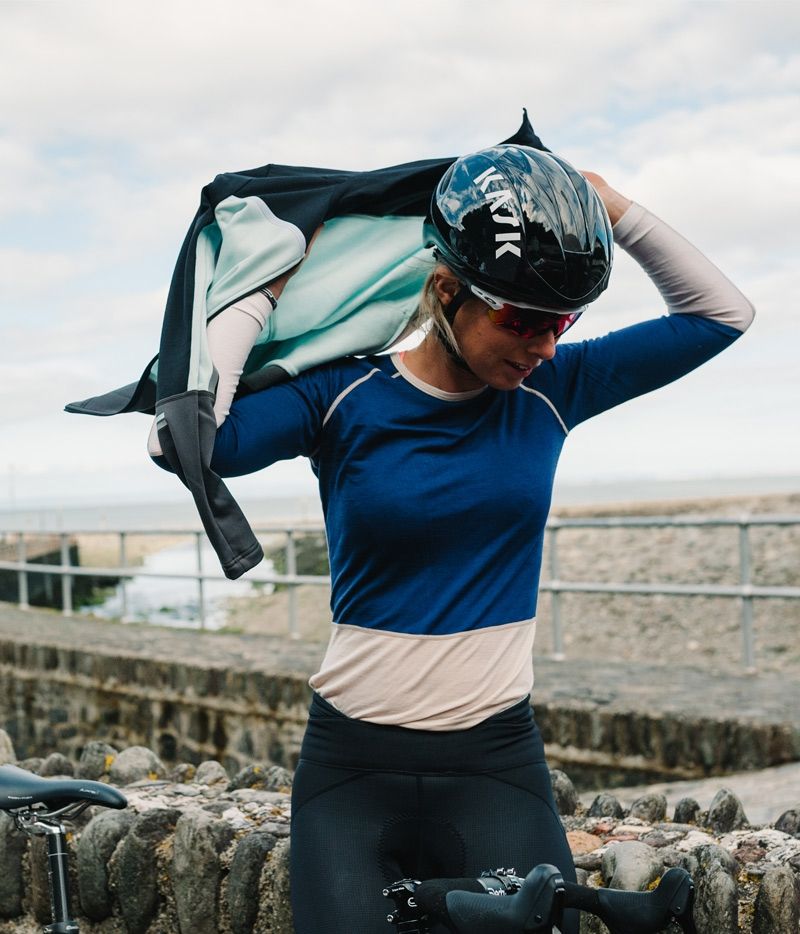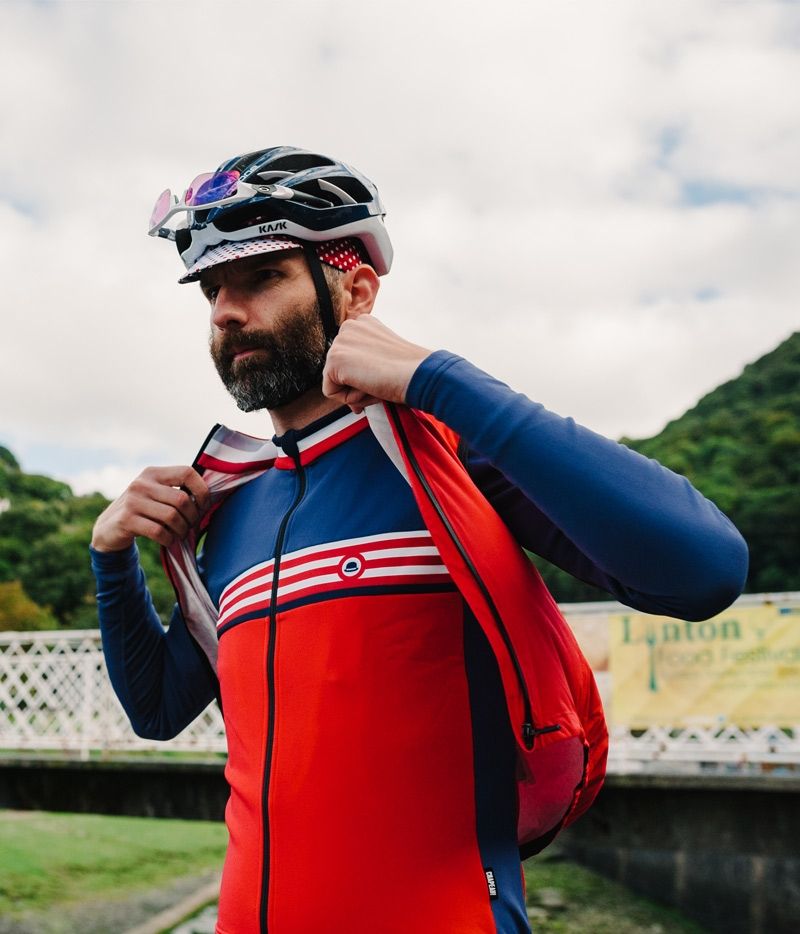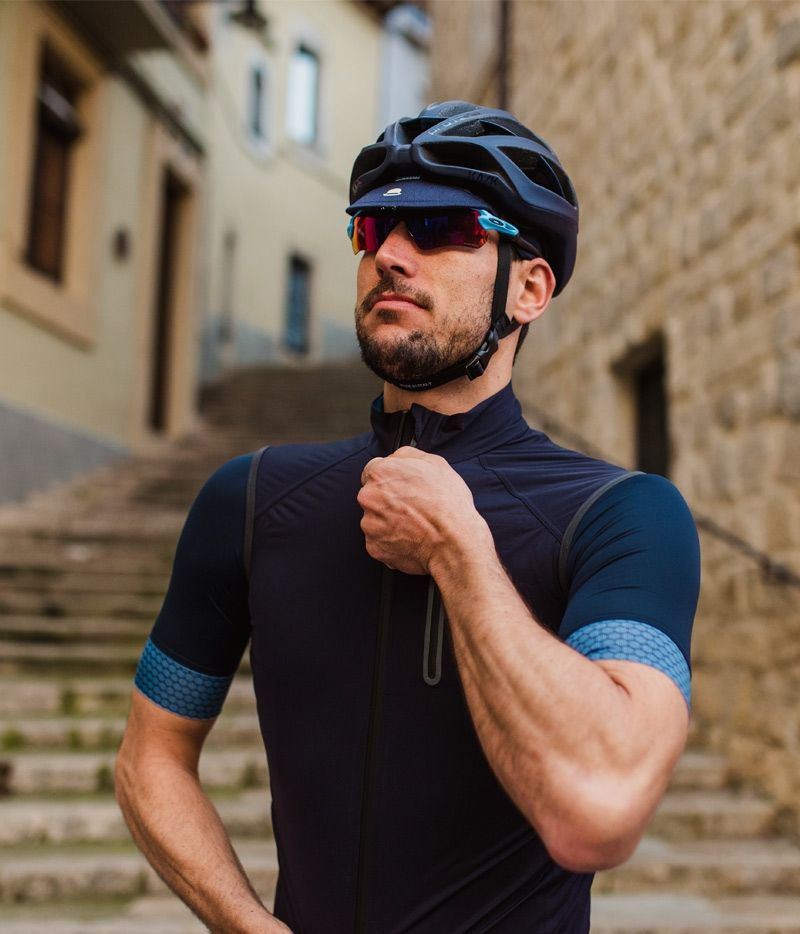The Layer Cake
There’s a lot to be said for keeping warm in the colder weather; toasty firesides, hot water bottles, big duvets and blankets. Knowing the outside is single figures whilst you’re cosily reading a book or watching the telly is a smugly satisfying feeling. As a cyclist, sooner or later, you do need to venture out into that cold. In deep winter we can throw the kitchen sink at the problem; thermal base layers, thermal jerseys, jackets, massive gloves and air activated warmers in your shoes. Pretty easy really. But what do you do when it starts warming up a little? It’s still cold, but it’s not Baltic. The solution is not to wear all your clothes — too many will have you sweating like a pig and you’ll end up with cold, damp clothes after the briefest of stops.
When seeking advice from friends and experts there's the added complication of The Variables. No, not a ska-punk band playing at your local pub, but the list of factors that mean keeping warm or staying cool is something personal to you. Your body temperature will be affected, not only by the ambient temperature, but by your personal physiology — whether you get hot or cold easily — by your personal preference and most certainly by your effort.
Like vocal harmonies in Crosby, Stills & Nash there are three parts to the perfect layering combo
What you need is layering. Layers are good because they trap air in between them, acting as an insulator for heat. You can add or remove layers depending on the varying situations and conditions, whether that’s changes to your efforts or to the weather. Let’s look at things more closely, there’s a formula to this — it’s the part where Jennifer Anniston would request you ‘pay attention, this is the science bit’. Although this isn’t really science, just common sense and a bit of experience.
Like a good victoria sponge cake or vocal harmonies in Crosby, Stills & Nash there are three parts to the perfect layering combo. The base layer, the mid-layer and an outer-layer.
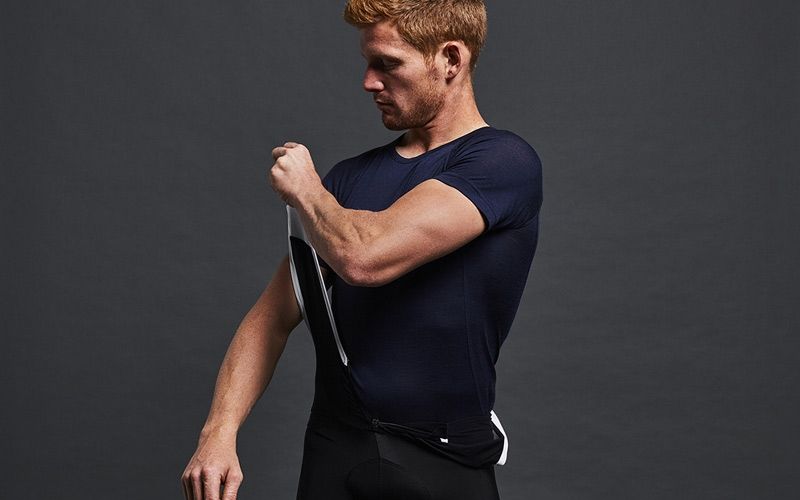
1. Baselayers (The, er, Base Layer)
Stating the obvious the base layer is the layer next to your skin. The first layer. You want this to do three very simple jobs; keep your body warm, allow freedom of movement and wick away sweat which passes through to the next layers. Like a material based relay team, but with moisture and not batons. Our original base layers are made from merino, the original technical fabric. Merino retains its warmth even when wet and has natural anti-microbial properties which prevents unpleasant odours. Coming this Spring / Summer we are adding a mesh summer base layer. All bases covered and a great start to your layering.
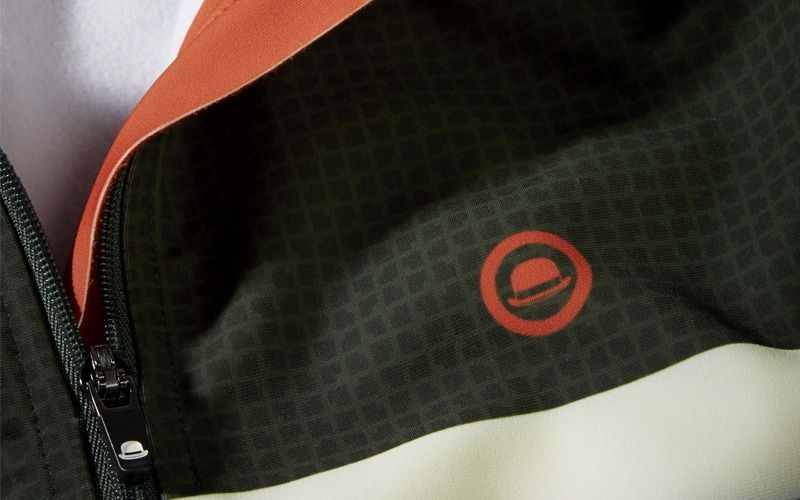
2. Jerseys (The Mid Layer)
The second layer will be your jersey, which might be a thermal long sleeve but could be a short sleeve with arm warmers. Choosing either a long sleeve or short sleeve base layer provides more choice in regulating temperature. You need this layer to fit comfortably over your base layer and not be restrictive. Again, you want moisture wicking to keep that moisture moving way from your body and the provision of warmth. Our club thermal jerseys are made with a luxurious fabric with added DWR shower proofing for extra protection and our short sleeve jerseys are lightweight and quick drying. Between our short and long sleeve jerseys you will find the perfect mid layer for your personal preference, especially when pared with the third and final layer.
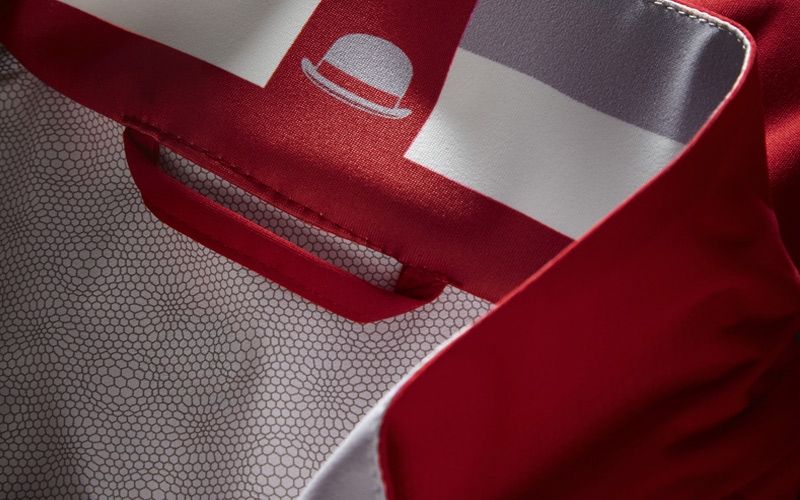
3. Gilets & Jackets (The Outer Layer)
A bit like the ozone layer, the outer layer does a lot of the dirty work with the elements. The outer layer also works best when it doesn’t have a big hole in it. Unlike the ozone, the outer layer should be close fitting whilst allowing for dynamic movement. We keep coming back to this movement of moisture and our jackets and gilets are the cherry on the victoria sponge in that regard. I’m not sure whether sponges have cherries on top, but that’s not important. The Echelon range is both shower and wind proof, the latter making the biggest difference to your core temperature when riding.
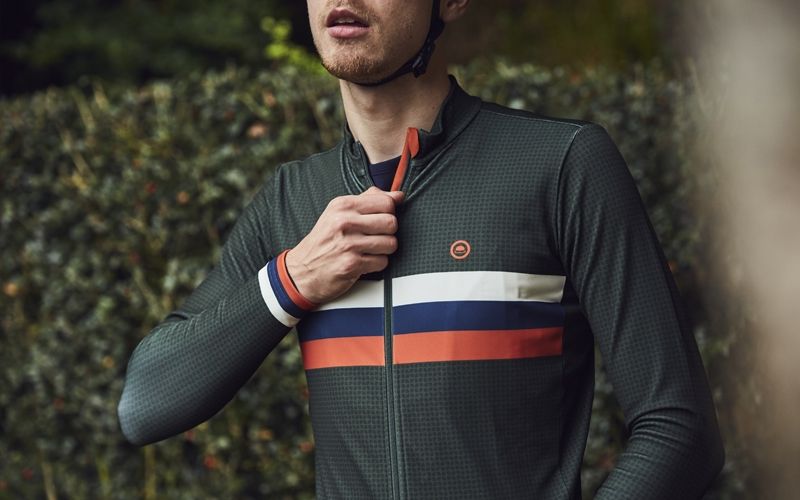
With these three layers you are set up for the changeable conditions of February, March and beyond. With enough protection and warmth to keep you comfortable and the flexibility to strip off, you can regulate your temperature with ease whilst looking sharp and feeling great.



